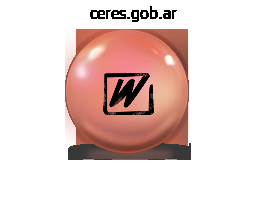
General Information about Primaquine
Primaquine is out there in both oral and injectable types, and its dosage and length of therapy range depending on the sort and severity of the malaria infection. The drug is usually well-tolerated, with no critical unwanted effects reported. However, like any medication, it could cause some gentle side effects such as nausea, headache, and belly ache.
Primaquine is a extremely efficient anti-malarial drug that belongs to the group of 8-aminohinolina derivatives. This medication is considered a key part within the fight in opposition to malaria, an epidemic that affects hundreds of thousands of individuals each year. With its unique mode of action, primaquine has confirmed to be effective in treating numerous forms of malaria and has saved countless lives.
One of probably the most notable properties of primaquine is its excessive activity in opposition to the first tissue types of Plasmodium falciparum, essentially the most lethal species of malaria. This is due to the drug's capacity to successfully intercalate with the parasite's DNA and disrupt its nucleic acid synthesis. This makes primaquine an important component within the therapy of severe instances of malaria attributable to Plasmodium falciparum.
One of the principle mechanisms of primaquine's anti-malarial activity is its capacity to intercalate with DNA in the parasites, particularly the plasmodia that causes malaria. This intercalation leads to disruption of the synthesis of nucleic acids, which are very important for the parasite's survival and replication. As a result, the parasite is unable to breed and cause additional injury to the body.
In addition to its anti-malarial properties, primaquine has additionally shown to have other helpful effects. It has been discovered to have anti-inflammatory and immunomodulatory effects, which might help in lowering the severity of the disease and its signs. Moreover, primaquine has a significant influence on decreasing the variety of malaria relapses, making it an important drug in stopping the recurrence of the disease.
In abstract, primaquine is a robust and efficient anti-malarial drug with a singular mode of motion. Its ability to intercalate with DNA within the parasites makes it highly active in opposition to all forms of malaria, especially the deadly Plasmodium falciparum. Its role in preventing relapses and lowering the severity of the illness makes it an essential component in the fight against malaria. With ongoing analysis and improvement, primaquine continues to carry nice potential in eradicating this world health risk.
Primaquine is mostly used in the therapy of the exo-erythrocytic types of all types of malaria. This includes each the first tissue stage and the para-erythrocyte stage of the illness. The major tissue stage refers to the parasite's development in the liver, while the para-erythrocyte stage is when the parasites infect red blood cells. By targeting both of those stages, primaquine is in a position to successfully eliminate the parasites from the physique and stop the illness from progressing additional.
Although histologic renal lesions are found in most persons with chronic gout, fewer than half show significant compromise of renal function. Until recently, most kidney stones required surgical removal, but ultrasonic disintegration (lithotripsy) and endoscopic removal are now effective. Renal Stones (Nephrolithiasis and Urolithiasis) Nephrolithiasis and urolithiasis are stones within the collecting system of the kidney (nephrolithiasis) or elsewhere in the collecting system of the urinary tract (urolithiasis). They vary in size from gravel (1 mm in diameter) to large stones that dilate the entire renal pelvis. Although they may be well tolerated, in some cases, they result in severe hydronephrosis and pyelonephritis. In the presence of urea-splitting bacteria, usually Proteus or Providencia species, the resulting alkaline urine favors precipitation of magnesium ammonium phosphate (struvite) and calcium phosphate (apatite). Infection stones occasionally fill the pelvis and calyces to form a cast of these spaces, referred to as a staghorn calculus. Bilateral urinary tract obstruction has led to conspicuous dilation of the ureters, pelves and calyces. Eventually, the proximal tubules become widely dilated, and loss of tubules is common. Grossly, progressive dilation of the renal pelvis and calyces occurs, and atrophy of the renal parenchyma ensues. In the presence of hydronephrosis, the kidney is more susceptible to pyelonephritis, which causes additional injury.
Primaquine Dosage and Price
Primaquine 15mg
- 30 pills - $78.08
- 60 pills - $118.05
- 90 pills - $157.04
- 120 pills - $183.07
- 180 pills - $256.09
Primaquine 7.5mg
- 30 pills - $65.93
- 60 pills - $117.04
- 120 pills - $219.26
- 240 pills - $423.70
- 300 pills - $525.93
